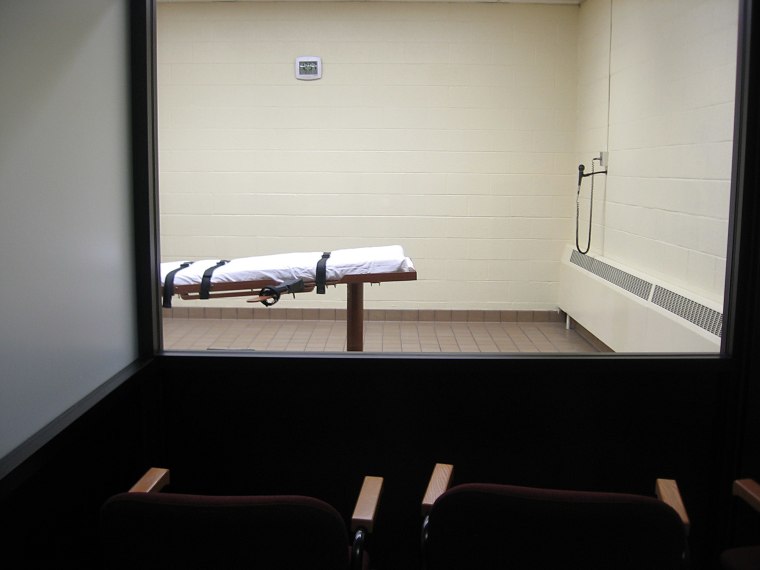When a psychologist took the stand in Duane Buck’s 1997 sentencing hearing in Texas, he testified that in his expert opinion, one key factor made the convicted killer an imminent danger to society: Buck was a black man.
Now nearly two decades later, the blatant racial undertones of Buck’s death sentence will be up for review before the Supreme Court next fall, becoming the latest case to shine light on the insidious – and often shockingly overt – role that race plays in determining who is condemned to death row.
Psychologist Walter Quijano was brought on the Texas case to provide expert testimony for Buck’s defense. But when cross-examined by prosecutors, Quijano testified that certain factors increased the likelihood that Buck, who was found guilty of killing his girlfriend and her friend, would commit future acts of violence.
RELATED: U.S. Supreme Court to Consider Racial Bias in Selecting Jurors
“You have determined that the sex factor, that a male is more violent than a female because that’s just the way it is, and that the race factor, black, increases the future dangerousness for various complicated reasons,” the prosecutor said to Quijano. “Is that correct?”
“Yes,” he replied.
Then-Texas Attorney General John Cornyn, who now serves as a U.S. senator, later admitted in 2000 that the state unfairly sentenced Buck and six other prisoners to death row by improperly linking race to future violent behavior. The six others were offered new sentencing hearings – all except for Buck. Timing worked against him. His case didn’t reach the courts until Cornyn’s successor had taken over, now-Gov. Greg Abbott. The new attorney general refused to give Buck a second chance.
“These cases confirm the deeply entrenched role of race in death penalty cases. And they can’t be viewed in isolation, either.”
Buck’s case now joins a spate of death penalty cases brought before the Supreme Court that present an disquieting reminder of the prevalence of racism in the criminal justice system. More often now, the justices are showing a willingness to take on the question: How long will the United States continue to tolerate blatant racial bias?
The Supreme Court overturned the conviction and death sentence of a Georgia man last month after it was revealed that prosecutors deliberately removed every prospective black juror in order to have an all-white pool.
Prosecutors were caught shamelessly ranking prospective jurors based on their race, sketching into the margins of their notes “B#1,” “B#2” and “B#3” and circling “Black” on juror questionnaires to keep a tally on people of color.
“These cases confirm the deeply entrenched role of race in death penalty cases,” said Robert Dunham, executive director of the Death Penalty Information Center. “And they can’t be viewed in isolation, either.”
RELATED: This Man is Searching For a Link Between Illiteracy and Racial Bias
But observers note that the high court’s intervention has not been universally applied in all racially charged cases, even those that saw explicit racial slurs being used against death row inmates.
Kenneth Fults, a black man convicted of the 1996 murder of his white neighbor, was executed in Georgia as scheduled in April, even despite clear evidence pointing to a sentencing process that was compromised by racism.
In a sworn affidavit, a juror on Fults trial admitted years later that he voted for the death penalty because “that’s what that n—– deserved.” Also, Fults’ trial lawyer at the time, a public defender who also handled his appeal, reportedly had a proclivity for making racially charged jokes.
It’s unclear why the Supreme Court would chose to step in and halt one overtly racialized death penalty case, but not another. As a possible explanation to the discrepancy, Dunham says a number of themes have arisen out of the court’s recent decisions, indicating greater scrutiny to cases in which prosecutors were central in expressly using race as a tool.
“What this may suggest is that the court is taking a closer look at cases in which the prosecution strategically employs races as a means to obtain the death penalty,” Dunham said. “But Fults shows how perniciously race can operate in secret with the juror and the defense lawyer both making bigoted comments, and the state and federal courts tolerate it.”
RELATED: Study Reveals Americans' Subconscious Racial Biases
The justices have been playing triage to a litany of death penalty-related issues brought before the court in recent terms. On top of the eleventh-hour appeals for the high court to halt executions, the Supreme Court in the last year alone has had to address a number of capital punishment cases dealing with state sentencing procedures, lethal drug combinations and jury protocols.
Buck v. Stephens is not the only death penalty case before the Supreme Court next term. The Court announced on Monday that it will also review another appeal in Texas, which questions the science behind the state’s standards in testing an inmate’s intellectual disabilities, determining whether they are fit to face capital punishment.
Still, the justices last week declined to consider a broad review into the constitutionality of the death penalty itself. But for the second time in more than a year, Justices Stephen Breyer and Ruth Bader Ginsburg dissented on the issue, urging their colleagues to reconsider.
“Rather than try to patch up the death penalty’s legal wounds one at a time, I would ask for full briefing on a more basic question: whether the death penalty violates the Constitution,” Breyer wrote, dissenting in Glossip v. Gross last year.
The justices will likely prefer to wait until the court’s vacancy is filled before they address an issue as contentious as capital punishment. But based on the number of death penalty cases that have exposed deeply troubling and systemic problems, the time to address the broader issue may come sooner than they’d like.
